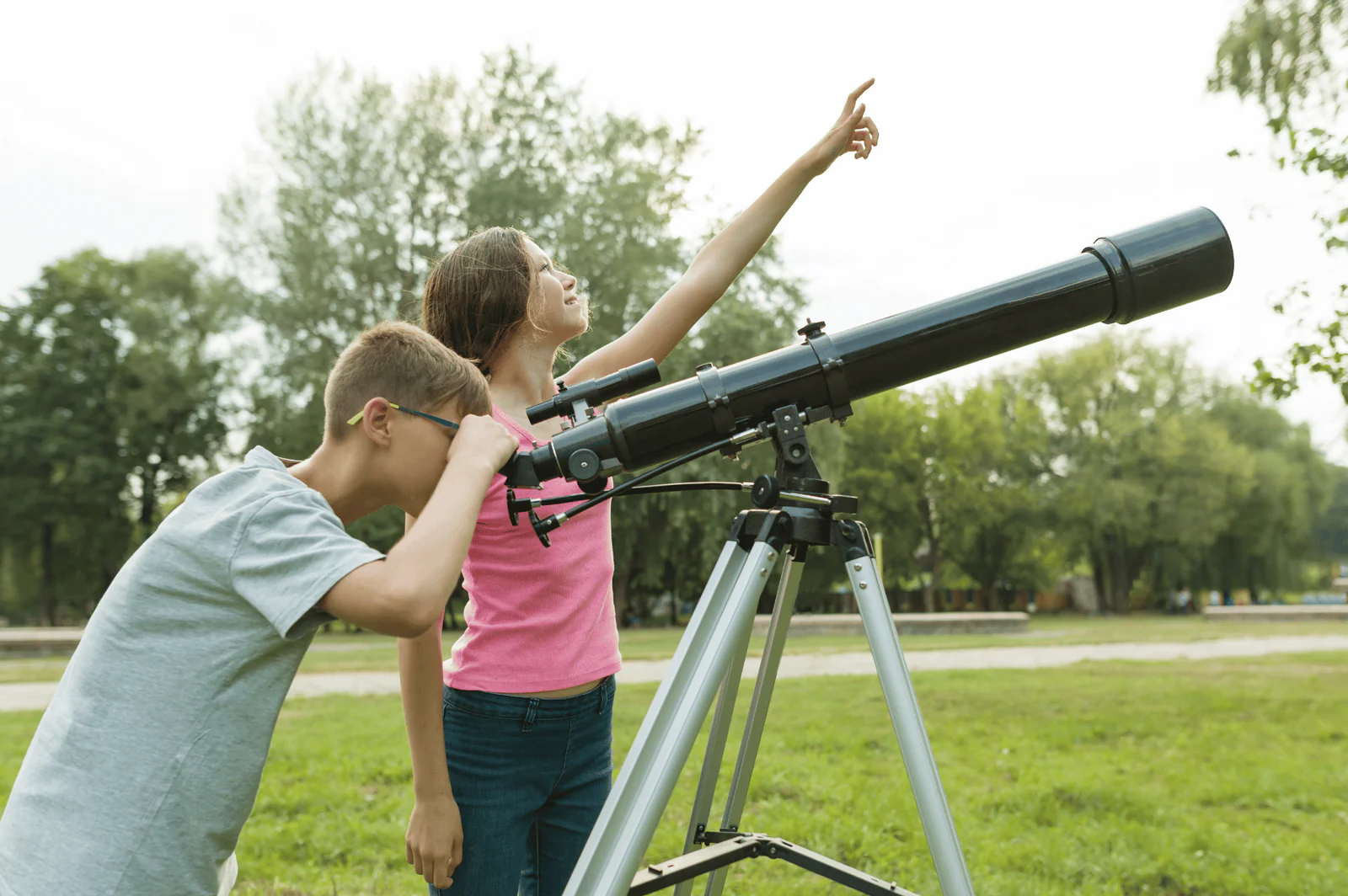Bought a telescope? Tips and tricks for beginners

Getting to know your telescope
Understand the basic principles and parts Before you get started with your telescope, it is important to understand its basic principles and parts. Take the time to familiarize yourself with the telescope, including the telescope tube, eyepiece and focusing. Learn how to assemble and adjust the telescope according to the manufacturer's instructions. By having a good knowledge of the basic principles and components of your telescope, you lay a solid foundation for successful observing.
Learn the terminology
It is useful to become familiar with the terminology used in the world of telescopic observations. For example, learn what terms such as focal length, aperture, eyepiece and magnification mean. Understanding the correct terminology will help you communicate better with other astronomers and get the most out of your telescope experience. There are online resources and books available that can help you learn the terminology of telescope observations.
Choose the correct viewing location
Find a dark and unobstructed sky
To get the most out of your telescope observations, it is important to choose a viewing location with a dark and unobstructed sky. Avoid areas with lots of artificial lighting, such as city centers, as this can affect the quality of your observations. Instead, look for remote areas, such as rural locations, where the night sky is less disturbed by light pollution. Also view our tips for stargazing in the Netherlands.

Be aware of light pollution and atmospheric conditions
When choosing a viewing location, it is also important to consider the level of light pollution and atmospheric conditions. Light pollution can reduce the brightness and contrast of objects in the sky, so look for places with minimal light pollution. In addition, atmospheric conditions, such as cloud cover, fog or turbulence, can affect the clarity and sharpness of your observations. So choose a time when atmospheric conditions are favorable, such as a clear and calm night, for the best results.
Explore the night sky
Learn to recognize important stars and planets
To get the most out of your telescope experience, it's important to be able to identify important stars and planets. Take the time to familiarize yourself with the best-known constellations and the brightest planets that are regularly visible. This allows you to search specifically for specific objects and enrich your observations.
Use star maps and apps
To help you identify stars and planets, you can use star maps and apps. Star maps show the relative positions of stars and other celestial bodies at a specific time and location. These maps can help you navigate the night sky and identify objects. In addition, there are several apps available that use augmented reality to help you find and recognize constellations and planets. Use these tools to further expand your star knowledge. A popular app in the telescope world is Night Sky.
Preparing your telescope for use
Assemble and calibrate according to instructions
Once you have purchased a telescope, it is important to assemble it correctly and calibrate it according to the instructions provided. Each type of telescope has specific mounting methods and calibration procedures, so be sure to follow the manual carefully. Correctly mounting and calibrating your telescope ensures that it performs optimally and that you get the best results during your observations.
Choose the right eyepieces and lenses
When using a telescope, selecting the right eyepieces and lenses is essential. Eyepieces determine the magnification and field of view of your telescope, while lenses influence light and image quality. Consult your telescope manufacturer's specifications and recommendations to choose the most appropriate eyepieces and lenses for your intended observations. Also experiment with different combinations to get the best image for different objects in the sky.
Start with observations
Explore the moon, planets and constellations
Once you're ready to make observations with your telescope, it's a good idea to start exploring the moon, planets, and constellations. The moon is a great object to start with because it is bright and easily visible. You can observe the various craters, mountains and seas on the moon's surface. You can then focus on planets such as Mars, Jupiter and Saturn, which are also highly visible and have fascinating features. Additionally, you can explore constellations and try to observe individual stars within these patterns. This will help you get comfortable with using your telescope and identifying different objects in the sky.
Experiment with magnifications and filters
During your observations you can experiment with different magnifications and filters to get the best image. Higher magnifications can increase details, but can also lead to a less clear image. Start with lower magnifications and adjust as you gain experience. In addition, you can use filters to emphasize specific features of objects, such as the atmospheric details of planets. Try different combinations of magnifications and filters to discover what works best for the objects you are observing.



